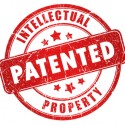This post is by Dave Nugent, Senior Producer at Cogent Legal
 Early in my career as a Litigation Media Producer, I supported an attorney’s tutorial and Markman presentation in a Federal District Court patent matter. The case was assigned a studious, no-nonsense IP judge. For the tutorial, she often would enter the courtroom nearly as well versed on the case and technology as anyone in the room. She would use the tutorial hearing as an opportunity to fill any potential holes in her understanding of the case and technology at issue.
Early in my career as a Litigation Media Producer, I supported an attorney’s tutorial and Markman presentation in a Federal District Court patent matter. The case was assigned a studious, no-nonsense IP judge. For the tutorial, she often would enter the courtroom nearly as well versed on the case and technology as anyone in the room. She would use the tutorial hearing as an opportunity to fill any potential holes in her understanding of the case and technology at issue.
Our lead attorney, however, wanted to prepare his tutorial in a style he was most comfortable with—a linear step-by-step PowerPoint overview of the industry background, prior art, and the problems or needs that the invention addressed.
When our attorney launched straight into his linear presentation with his recitation of the invention’s background and prior art, the judge showed immediate impatience, and abruptly waved the flustered attorney off with a terse, “I read all that in your brief, counsel. I have some questions for you.”
Rattled and fairly embarrassed before the assembled court, the attorney tried to answer the questions while associates were trying to hunt through the PowerPoint in working mode, to find relevant sections that were buried deep in the rigidly sequential PowerPoint. This process was slow, cumbersome, disruptive and added further irritation to the judge’s patience and poor assessment of our legal team’s perceived preparedness!
It was a bad day in court.
From the lessons learned that day, I developed a visual presentation template to offer clients that can respond seamlessly to the potentially “nonlinear” means of inquiry during a patent tutorial and Markman, where flexibility to deviate from a set narrative plan and quickly navigate to the desired content is essential. Additionally, this presentation medium can effortlessly embed robust animation and interactive media to better illuminate the arcane, reveal the unseen or abstract, and help compel our side’s presentation of the facts.
Our online interactive sample patent tutorial and Markman presentation (note: must be viewed on a Flash-enabled computer or mobile device) illustrates this successful means to present your case to the court. The advantages of this presentation mode are:
- The navigation scheme is based on the familiar web browser design, grouping like-themed media under dedicated pull-down menus.
- The media content can still be stepped through sequentially in presentation before the court, or one can seamlessly navigate to any one demonstrative, or subset of demonstratives, as circumstances require.
- The non-linear design with a web browser-like navigation is ideal for a hand-off to the court on a CD for review and study. Courts prefer this easily accessible, familiar and engaging mode of review of submitted tutorials and claims construction (with the wealth of supporting cites transformed from stacks of binders to digitized links).
- The tutorial content can first be presented and delivered as an initial hand-off. The claims construction content is added for that hearing and hand-off, with the tutorial content still available in the menu for the judge and clerk to revisit.
- Unlike PowerPoint, the Flash-built interactive presentation can easily embed and play animations, interactive graphics, sub-slide shows, large PDF documents, video and other media, as well as cross-link and reference relevant content to better inform the judge and clerk, and to more comprehensively reveal and compel your assertion of the facts.
With this method, we create successful interactive, nonlinear tutorial and Markman presentations for any type of patent case, with the advantage gained by the trial teams confirmed by the results.
Please peruse the linked online sample interactive patent tutorial/Markman presentation. It is excerpted from Cogent Legal’s Guide to Intellectual Property Litigation Graphics, which we also invite you to browse. Then contact us to discuss your next patent litigation case, so you can have a good day in court.
Related posts:
- IP Attorneys: A Guide to Effective, Engaging Graphics for Patent Litigation
- 5 Reasons Why Attorneys Should Try Interactive PDFs for Case Presentations
- e-Briefs on the iPad: An Exciting New Tool to Give Attorneys an Edge
- Why Attorneys Should Treat Mediation Like Trial
- From the Archives: My 8 Most Popular and Useful Posts for Attorneys from 2011